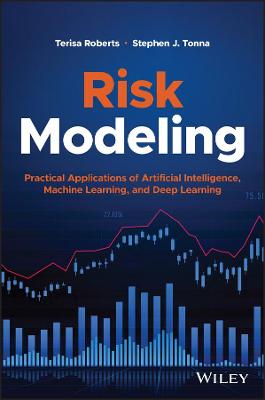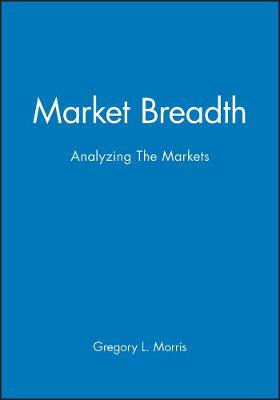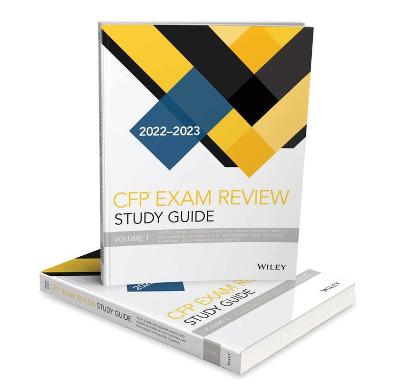Risk Modeling
 -15%
portes grátis
-15%
portes grátis
Risk Modeling
Practical Applications of Artificial Intelligence, Machine Learning, and Deep Learning
Roberts, Terisa; Tonna, Stephen J.
John Wiley & Sons Inc
09/2022
208
Dura
Inglês
9781119824930
15 a 20 dias
460
Descrição não disponível.
Acknowledgments xi
Preface xiii
Chapter 1 Introduction 1
Risk Modeling: Definition and Brief History 4
Use of AI and Machine Learning in Risk Modeling 7
The New Risk Management Function 7
Overcoming Barriers to Technology and AI Adoption with a Little Help from Nature 10
This Book: What It Is and Is Not 11
Endnotes 12
Chapter 2 Data Management and Preparation 15
Importance of Data Governance to the Risk Function 18
Fundamentals of Data Management 20
Other Data Considerations for AI, Machine Learning, and Deep Learning 22
Concluding Remarks 29
Endnotes 30
Chapter 3 Artificial Intelligence, Machine Learning, and Deep Learning Models for Risk Management 31
Risk Modeling Using Machine Learning 35
Definitions of AI, Machine, and Deep Learning 40
Concluding Remarks 52
Endnotes 52
Chapter 4 Explaining Artificial Intelligence, Machine Learning, and Deep Learning Models 55
Difference Between Explaining and Interpreting Models 57
Why Explain AI Models 59
Common Approaches to Address Explainability of Data Used for Model Development 61
Common Approaches to Address Explainability of Models and Model Output 62
Limitations in Popular Methods 68
Concluding Remarks 69
Endnotes 69
Chapter 5 Bias, Fairness, and Vulnerability in Decision-Making 71
Assessing Bias in AI Systems 73
What Is Bias? 76
What Is Fairness? 77
Types of Bias in Decision-Making 78
Concluding Remarks 89
Endnotes 89
Chapter 6 Machine Learning Model Deployment, Implementation, and Making Decisions 91
Typical Model Deployment Challenges 93
Deployment Scenarios 98
Case Study: Enterprise Decisioning at a Global Bank 101
Practical Considerations 102
Model Orchestration 103
Concluding Remarks 104
Endnote 104
Chapter 7 Extending the Governance Framework for Machine Learning Validation and Ongoing Monitoring 105
Establishing the Right Internal Governance Framework 108
Developing Machine Learning Models with Governance in Mind 109
Monitoring AI and Machine Learning 112
Compliance Considerations 122
Further Takeaway 125
Concluding Remarks 126
Endnotes 127
Chapter 8 Optimizing Parameters for Machine Learning Models and Decisions in Production 129
Optimization for Machine Learning 131
Machine Learning Function Optimization Using Solvers 133
Tuning of Parameters 136
Other Optimization Algorithms for Risk Models 141
Machine Learning Models as Optimization Tools 143
Concluding Remarks 147
Endnotes 148
Chapter 9 The Interconnection between Climate and Financial Instability 149
Magnitude of Climate Instability: Understanding the "Why" of Climate Change Risk Management 152
Interconnected: Climate and Financial Stability 157
Assessing the impacts of climate change using AI and machine learning 158
Using scenario analysis to understand potential economic impact 160
Practical Examples 170
Concluding Remarks 172
Endnotes 172
About the Authors 175
Index 177
Preface xiii
Chapter 1 Introduction 1
Risk Modeling: Definition and Brief History 4
Use of AI and Machine Learning in Risk Modeling 7
The New Risk Management Function 7
Overcoming Barriers to Technology and AI Adoption with a Little Help from Nature 10
This Book: What It Is and Is Not 11
Endnotes 12
Chapter 2 Data Management and Preparation 15
Importance of Data Governance to the Risk Function 18
Fundamentals of Data Management 20
Other Data Considerations for AI, Machine Learning, and Deep Learning 22
Concluding Remarks 29
Endnotes 30
Chapter 3 Artificial Intelligence, Machine Learning, and Deep Learning Models for Risk Management 31
Risk Modeling Using Machine Learning 35
Definitions of AI, Machine, and Deep Learning 40
Concluding Remarks 52
Endnotes 52
Chapter 4 Explaining Artificial Intelligence, Machine Learning, and Deep Learning Models 55
Difference Between Explaining and Interpreting Models 57
Why Explain AI Models 59
Common Approaches to Address Explainability of Data Used for Model Development 61
Common Approaches to Address Explainability of Models and Model Output 62
Limitations in Popular Methods 68
Concluding Remarks 69
Endnotes 69
Chapter 5 Bias, Fairness, and Vulnerability in Decision-Making 71
Assessing Bias in AI Systems 73
What Is Bias? 76
What Is Fairness? 77
Types of Bias in Decision-Making 78
Concluding Remarks 89
Endnotes 89
Chapter 6 Machine Learning Model Deployment, Implementation, and Making Decisions 91
Typical Model Deployment Challenges 93
Deployment Scenarios 98
Case Study: Enterprise Decisioning at a Global Bank 101
Practical Considerations 102
Model Orchestration 103
Concluding Remarks 104
Endnote 104
Chapter 7 Extending the Governance Framework for Machine Learning Validation and Ongoing Monitoring 105
Establishing the Right Internal Governance Framework 108
Developing Machine Learning Models with Governance in Mind 109
Monitoring AI and Machine Learning 112
Compliance Considerations 122
Further Takeaway 125
Concluding Remarks 126
Endnotes 127
Chapter 8 Optimizing Parameters for Machine Learning Models and Decisions in Production 129
Optimization for Machine Learning 131
Machine Learning Function Optimization Using Solvers 133
Tuning of Parameters 136
Other Optimization Algorithms for Risk Models 141
Machine Learning Models as Optimization Tools 143
Concluding Remarks 147
Endnotes 148
Chapter 9 The Interconnection between Climate and Financial Instability 149
Magnitude of Climate Instability: Understanding the "Why" of Climate Change Risk Management 152
Interconnected: Climate and Financial Stability 157
Assessing the impacts of climate change using AI and machine learning 158
Using scenario analysis to understand potential economic impact 160
Practical Examples 170
Concluding Remarks 172
Endnotes 172
About the Authors 175
Index 177
Este título pertence ao(s) assunto(s) indicados(s). Para ver outros títulos clique no assunto desejado.
artificial intelligence risk management; machine learning risk management; AI applications risk management; machine learning credit risk; AI risk modelling techniques; machine learning risk management algorithms; deep learning risk management
Acknowledgments xi
Preface xiii
Chapter 1 Introduction 1
Risk Modeling: Definition and Brief History 4
Use of AI and Machine Learning in Risk Modeling 7
The New Risk Management Function 7
Overcoming Barriers to Technology and AI Adoption with a Little Help from Nature 10
This Book: What It Is and Is Not 11
Endnotes 12
Chapter 2 Data Management and Preparation 15
Importance of Data Governance to the Risk Function 18
Fundamentals of Data Management 20
Other Data Considerations for AI, Machine Learning, and Deep Learning 22
Concluding Remarks 29
Endnotes 30
Chapter 3 Artificial Intelligence, Machine Learning, and Deep Learning Models for Risk Management 31
Risk Modeling Using Machine Learning 35
Definitions of AI, Machine, and Deep Learning 40
Concluding Remarks 52
Endnotes 52
Chapter 4 Explaining Artificial Intelligence, Machine Learning, and Deep Learning Models 55
Difference Between Explaining and Interpreting Models 57
Why Explain AI Models 59
Common Approaches to Address Explainability of Data Used for Model Development 61
Common Approaches to Address Explainability of Models and Model Output 62
Limitations in Popular Methods 68
Concluding Remarks 69
Endnotes 69
Chapter 5 Bias, Fairness, and Vulnerability in Decision-Making 71
Assessing Bias in AI Systems 73
What Is Bias? 76
What Is Fairness? 77
Types of Bias in Decision-Making 78
Concluding Remarks 89
Endnotes 89
Chapter 6 Machine Learning Model Deployment, Implementation, and Making Decisions 91
Typical Model Deployment Challenges 93
Deployment Scenarios 98
Case Study: Enterprise Decisioning at a Global Bank 101
Practical Considerations 102
Model Orchestration 103
Concluding Remarks 104
Endnote 104
Chapter 7 Extending the Governance Framework for Machine Learning Validation and Ongoing Monitoring 105
Establishing the Right Internal Governance Framework 108
Developing Machine Learning Models with Governance in Mind 109
Monitoring AI and Machine Learning 112
Compliance Considerations 122
Further Takeaway 125
Concluding Remarks 126
Endnotes 127
Chapter 8 Optimizing Parameters for Machine Learning Models and Decisions in Production 129
Optimization for Machine Learning 131
Machine Learning Function Optimization Using Solvers 133
Tuning of Parameters 136
Other Optimization Algorithms for Risk Models 141
Machine Learning Models as Optimization Tools 143
Concluding Remarks 147
Endnotes 148
Chapter 9 The Interconnection between Climate and Financial Instability 149
Magnitude of Climate Instability: Understanding the "Why" of Climate Change Risk Management 152
Interconnected: Climate and Financial Stability 157
Assessing the impacts of climate change using AI and machine learning 158
Using scenario analysis to understand potential economic impact 160
Practical Examples 170
Concluding Remarks 172
Endnotes 172
About the Authors 175
Index 177
Preface xiii
Chapter 1 Introduction 1
Risk Modeling: Definition and Brief History 4
Use of AI and Machine Learning in Risk Modeling 7
The New Risk Management Function 7
Overcoming Barriers to Technology and AI Adoption with a Little Help from Nature 10
This Book: What It Is and Is Not 11
Endnotes 12
Chapter 2 Data Management and Preparation 15
Importance of Data Governance to the Risk Function 18
Fundamentals of Data Management 20
Other Data Considerations for AI, Machine Learning, and Deep Learning 22
Concluding Remarks 29
Endnotes 30
Chapter 3 Artificial Intelligence, Machine Learning, and Deep Learning Models for Risk Management 31
Risk Modeling Using Machine Learning 35
Definitions of AI, Machine, and Deep Learning 40
Concluding Remarks 52
Endnotes 52
Chapter 4 Explaining Artificial Intelligence, Machine Learning, and Deep Learning Models 55
Difference Between Explaining and Interpreting Models 57
Why Explain AI Models 59
Common Approaches to Address Explainability of Data Used for Model Development 61
Common Approaches to Address Explainability of Models and Model Output 62
Limitations in Popular Methods 68
Concluding Remarks 69
Endnotes 69
Chapter 5 Bias, Fairness, and Vulnerability in Decision-Making 71
Assessing Bias in AI Systems 73
What Is Bias? 76
What Is Fairness? 77
Types of Bias in Decision-Making 78
Concluding Remarks 89
Endnotes 89
Chapter 6 Machine Learning Model Deployment, Implementation, and Making Decisions 91
Typical Model Deployment Challenges 93
Deployment Scenarios 98
Case Study: Enterprise Decisioning at a Global Bank 101
Practical Considerations 102
Model Orchestration 103
Concluding Remarks 104
Endnote 104
Chapter 7 Extending the Governance Framework for Machine Learning Validation and Ongoing Monitoring 105
Establishing the Right Internal Governance Framework 108
Developing Machine Learning Models with Governance in Mind 109
Monitoring AI and Machine Learning 112
Compliance Considerations 122
Further Takeaway 125
Concluding Remarks 126
Endnotes 127
Chapter 8 Optimizing Parameters for Machine Learning Models and Decisions in Production 129
Optimization for Machine Learning 131
Machine Learning Function Optimization Using Solvers 133
Tuning of Parameters 136
Other Optimization Algorithms for Risk Models 141
Machine Learning Models as Optimization Tools 143
Concluding Remarks 147
Endnotes 148
Chapter 9 The Interconnection between Climate and Financial Instability 149
Magnitude of Climate Instability: Understanding the "Why" of Climate Change Risk Management 152
Interconnected: Climate and Financial Stability 157
Assessing the impacts of climate change using AI and machine learning 158
Using scenario analysis to understand potential economic impact 160
Practical Examples 170
Concluding Remarks 172
Endnotes 172
About the Authors 175
Index 177
Este título pertence ao(s) assunto(s) indicados(s). Para ver outros títulos clique no assunto desejado.







